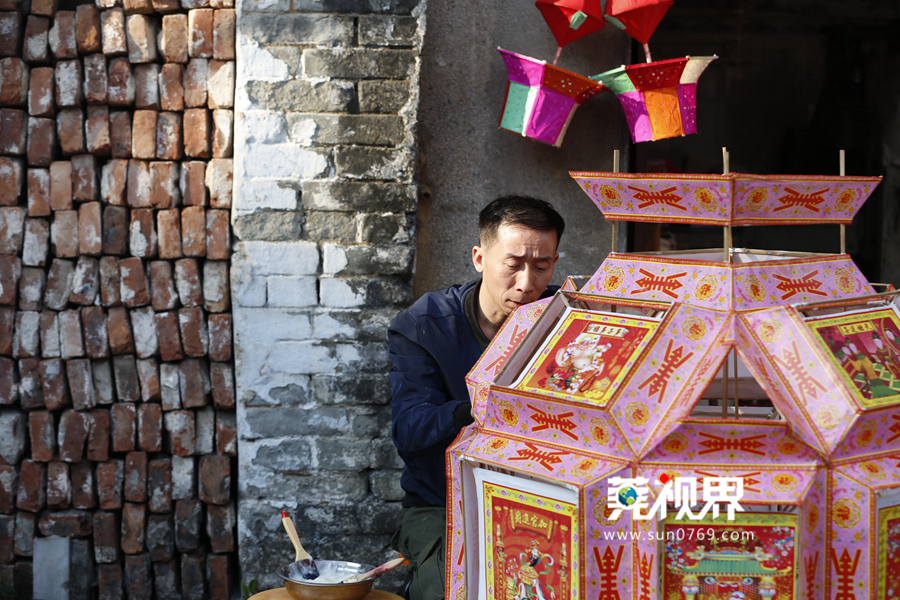The 15th day of the first lunar month is the Chinese Lantern Festival, because the 15th day is the first night to see a full moon. The first lunar month is called “yuan-month” and in ancient times people called night “xiao”, so the day is also called the “Yuan Xiao Festival”.
According to Chinese tradition, at the very beginning of a new year, when there is a bright full moon hanging in the sky, there should be thousands of colourful lanterns hung out for people to appreciate. At this time, people will try to solve puzzles on the lanterns and eat yuanxiao (glutinous rice balls) and gather their families in a joyful atmosphere.
In Dongguan, the word for lantern (灯 dēng) is pronounced similarly to (丁 dīng), which means “a new-born baby boy”. Therefore families who hung lanterns in their house during the Spring Festival means they had a new-born baby boy. The lantern represents illumination of the future and giving birth. Wang Haojun is the third descendant of Wang Zaoji’s lanterns, and here guides us how to make these beautiful lanterns.
Kelly (from the United States), with Marisol and Christina (both from Spain) are for the first time experiencing this intangible culture heritage. Making these beautiful lanterns is a big challenge!

Wang Haojun is making a lantern in front of house.
More than 100 steps, all by hand
According to Wang Haojun, their family has been making lanterns since the early 1930’s. “Zaoji Lanterns” are named after his father who excelled in the 1980’s. Wang Haojun now makes more than 1,500 lanterns every year, mainly sold in Dongguan, Shenzhen, and Hong Kong.
The largest lantern is 1 metre in diameter, though smaller lanterns are quite lovely. “It takes a man two or three days to make an 80cm lantern. Broken bamboo strips for the support structure, stick paper, and everything else required are all made by hand. The only thing machine made is the printed festive paper”, said Wang Haojun.
Wang Haojun lay out his props used for the craft: bamboo strips, festive paper, silk paper, and glue.